The flowers you plant make your garden, but it’s how you plant them that really makes them stand out. This year, transform a simple wooden pallet into a gorgeous pallet garden with this fun project!
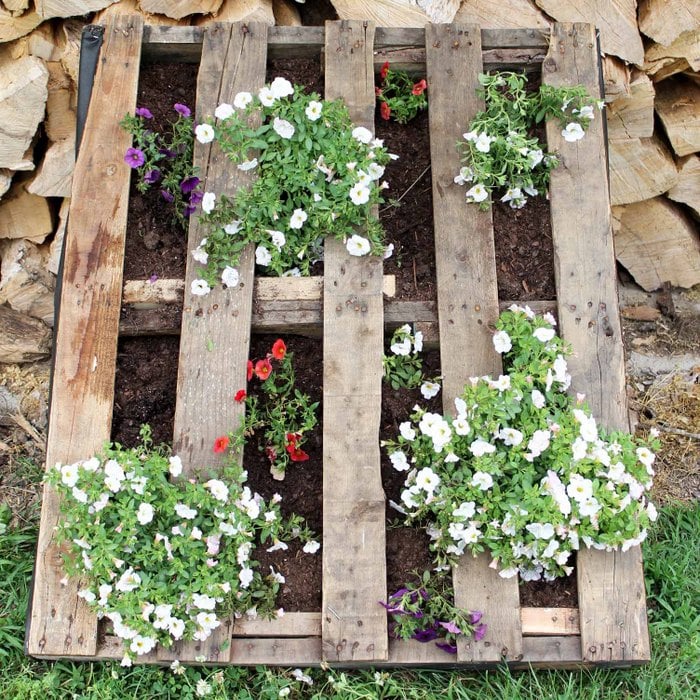
Pallet Garden
Pallets seem to be everywhere! Chances are you probably even have one sitting around collecting dust. Do you have an old pallet lying around? If not, finding one shouldn’t be hard at all. I love working with pallets because they are SO versatile! You can do almost anything from making a garden flag to signs and many other pallet project ideas.
Now I have a new idea for you: a pallet garden!
Have you ever heard of a pallet garden before? If not, you are missing out on the potential for making your outdoor space a beautiful and eye-catching retreat. This is because pallet gardens can be vertical gardens that are not only gorgeous to look at, but can help you to save on gardening space.
It’s super easy to make a pallet garden, and it can have a big visual impact on your outdoor space. Find a discarded pallet and recycle it into a gorgeous rustic flower garden in just minutes! Let’s get started.
Supplies Needed For DIY Pallet Garden
- Pallet of any size
- Saw (only if the pallet is too large)
- Landscape fabric
- Staple gun
- Staples
- Scissors
- Potting soil
- Flowers
Want more ideas for pallets? Click here for pallet projects that sell!
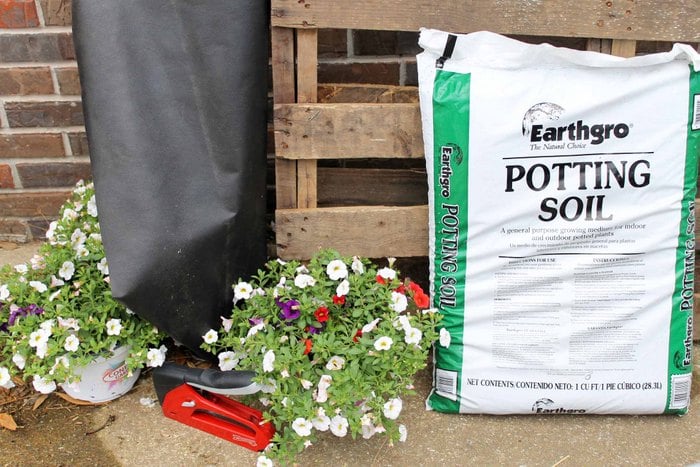
How To Make A Pallet Garden
Just follow these simple step-by-step instructions, and you’ll have a new DIY vertical pallet garden in no time!
Step 1: Inspect Pallet
Once you find a pallet, do a quick inspection to make sure there aren’t any unwanted nails poking out that could be potentially dangerous. If you find any, either pull it out with a hammer or use the hammer to bend the nail alongside the wood so it doesn’t poke out.
Step 2: Cut Your Pallet To Size (optional)
Once your pallet is ready, cut it to your preferred size if it is too large. An electric saw or hand saw will work for this task.
Step 3: Cut Landscape Fabric
Then, it is time to add landscape fabric to the back to hold the dirt and plants. Using scissors, cut the fabric to the size of your pallet. Make sure it will wrap around any open sides as well.
If your landscaping fabric isn’t large enough to do this in one large sheet, you can also piece together the fabric to cover your pallet as well.
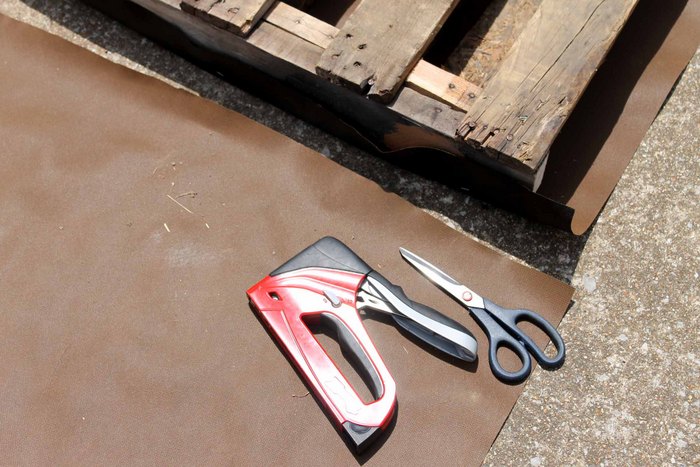
Step 4: Staple Landscape Fabric To The Back Of The Pallet
Add the landscape fabric to the back of the pallet. Wrap it around the sides of the pallet slightly and staple well.
You want to get as many staples into the fabric as possible so it will hold once filled. Leave some excess fabric and trim with scissors after stapling. Repeat on the opposite side, pulling the landscape fabric tight as you staple.
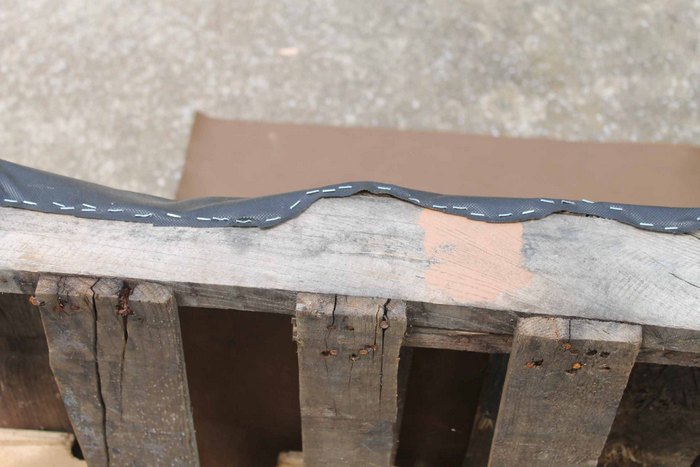
Step 5: Add Additional Landscape Fabric Pieces
You may even need to cut additional pieces if your fabric is not wide enough to cover the entire pallet at once. For these additional pieces, just be sure to staple them securely.
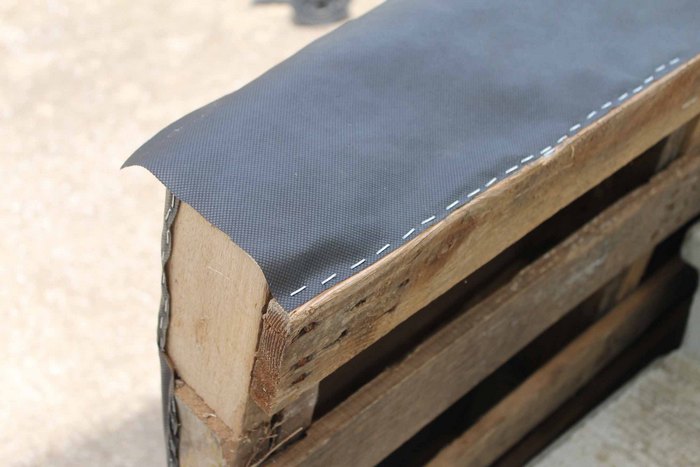
Step 6: Secure Landscape Fabric With More Staples
Next, staple where the two pieces of fabric join. Continue around your entire pallet until the back and any open sides are completely covered.
You can also add staples to any board in the back to help hold the fabric in place so it does not droop.
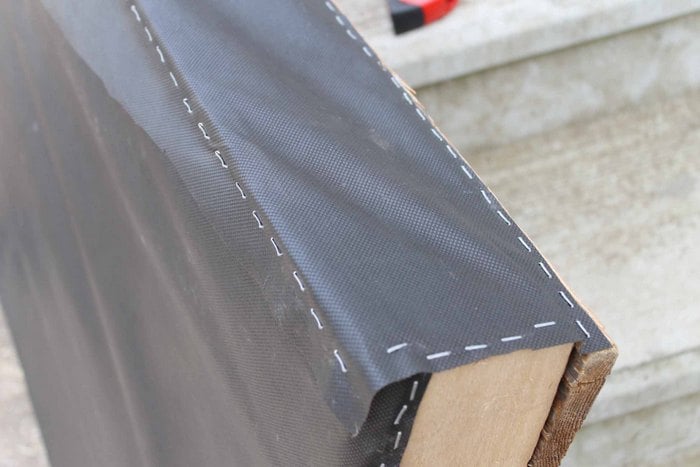
Step 7: Fill Pallet With Soil
Fill your pallet with potting soil.
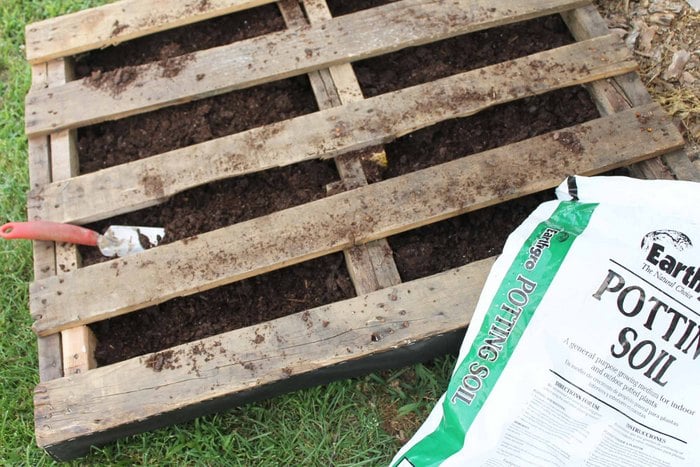
Step 8: Add Plants
Then add in your plants. You can plant flowers as shown here or try vegetables or even herbs. A pallet garden can be filled with anything that your heart desires and is a great way to expand a vegetable garden when you don’t have the yard space to do that!

Important Project Tip for a Successful Pallet Garden
Water your plants well!
A DIY vertical pallet garden works best when left horizontal for about a week. This will allow the roots to establish and the dirt to settle well. Then, you can pick up the entire thing and lean it against a wall or any other vertical surface.
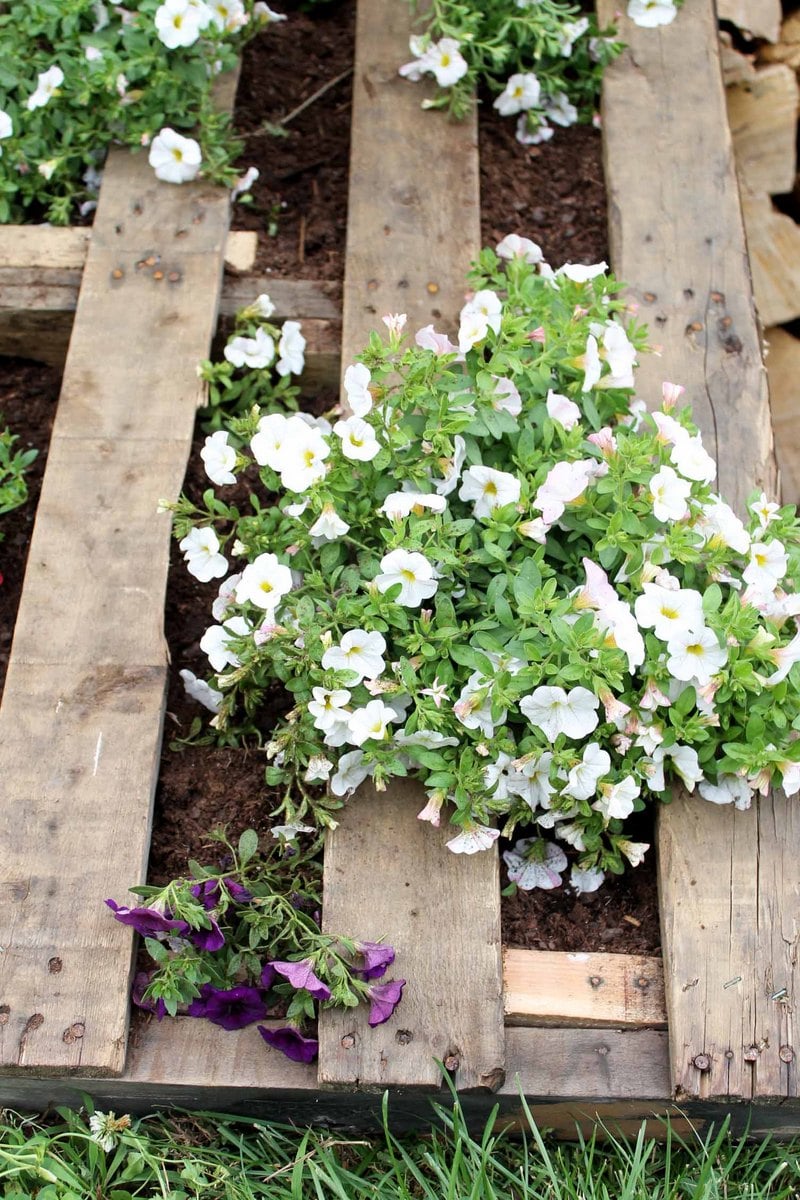
You will have to water this project regularly as the landscape fabric will allow water to escape, and the soil will dry out very quickly.
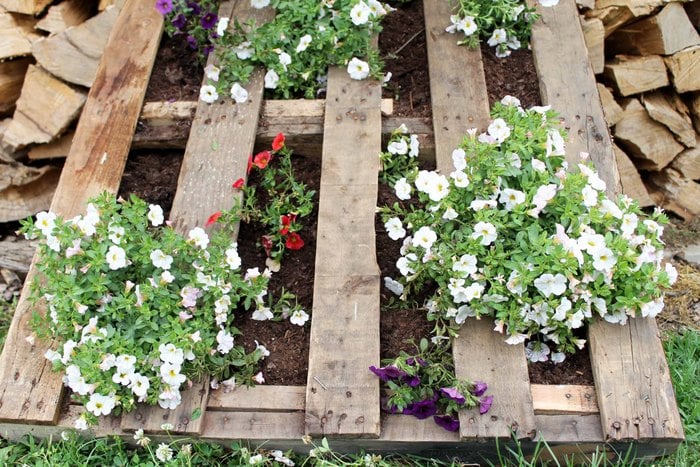
But isn’t that gorgeous rustic appearance completely worth it?
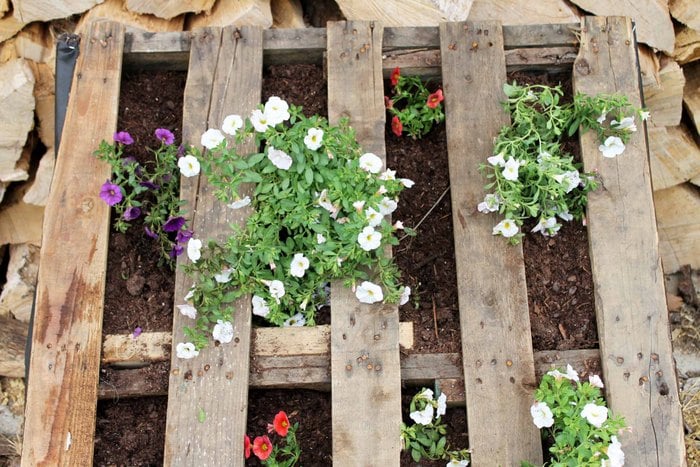
I love the look of the flowers against the pallet wood!
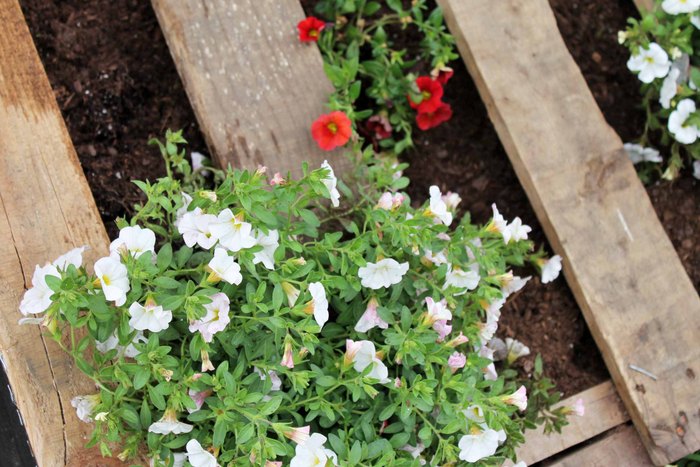
Search for a pallet near you and get started on this project today. You’ll be thrilled that you did. 😉
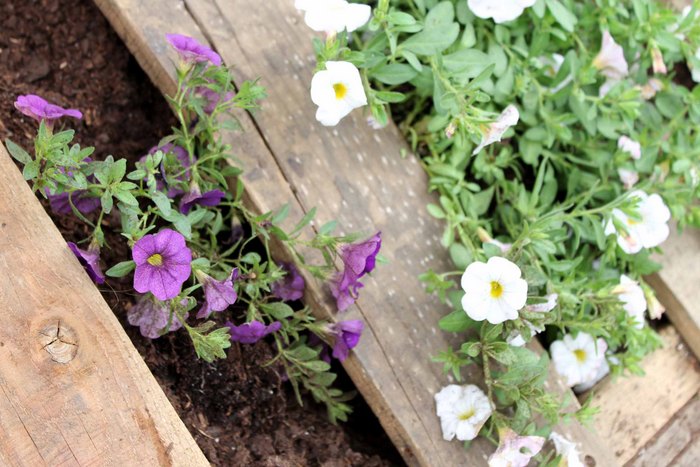
A pallet garden is the perfect addition to your house this spring!
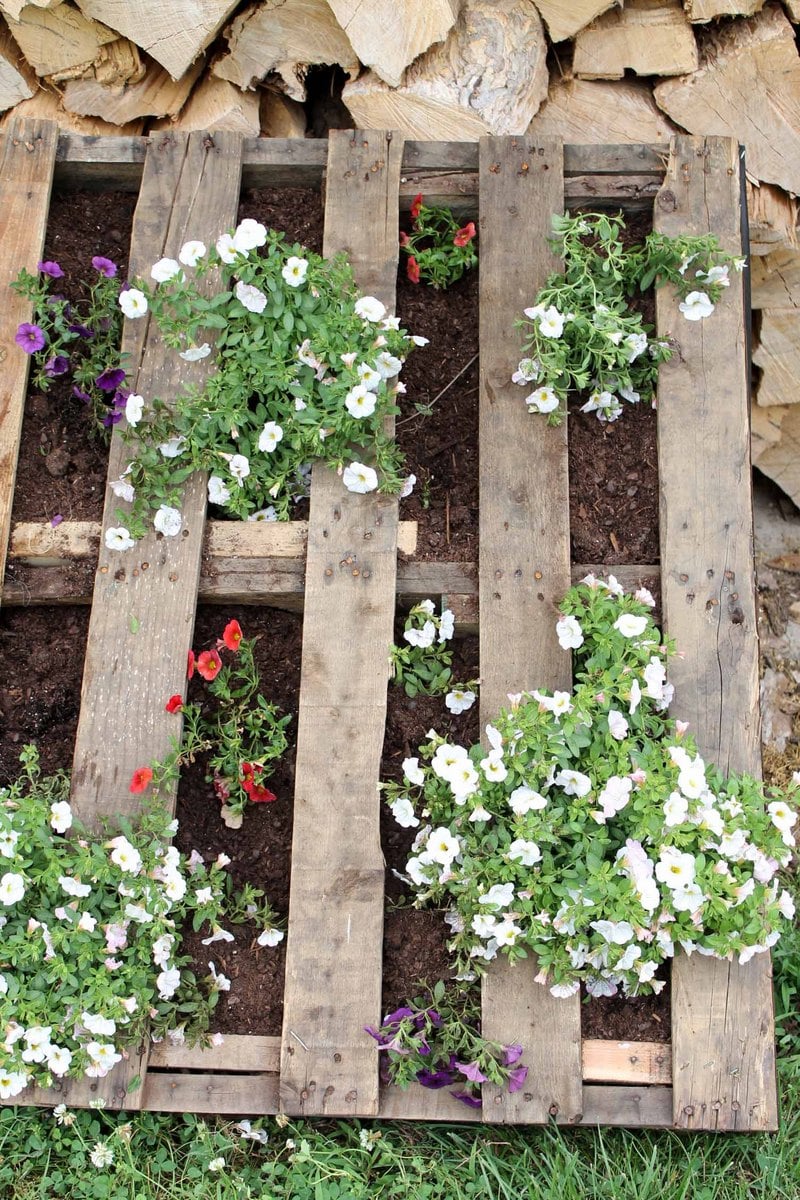
FAQs About Pallet Garden
Here are the answers to some common questions I often get about this project.
Where Can I Get Pallets?
You can get wood pallets at hardware stores, garden stores, and even Facebook Marketplace.
What Should I Look For When Picking Out A Wood Pallet?
Pallets, in general, will not be perfect. However, when looking at them, the main things you want to avoid are pallets that are broken, chemically treated, or show signs of aging.
Also, if you go the recycled route, ensure your pallet has an HT stamped on it. That will show that it has been heat-treated and not chemically treated.
If I Can’t Find A Pallet, Can I Make My Own?
Yes, you can!
Again, you will want to use wood that has not been chemically treated when building your pallet. To learn how to make your own, check out this How To Make A Pallet from Taylor Bradford!
Can I Use Something Else Besides Landscape Fabric?
If you don’t have landscape fabric or if you can find it, you could use plastic instead.
What Types Of Plants or Vegetables/Fruits Are Suitable For A Pallet Garden?
So many! Below is a short list of some of my favorites.
- Plants – Succulents, Petunias, Nasturtium
- Vegetables / Fruits – Lettuce, Peppers, Strawberries
- Herbs – Cilantro, Oregano, Basil
If you want a full comprehensive list of plants or vegetables/fruits that you can add to your pallet garden, check out this What Can I Grow in a Vertical Pallet Garden? by 1001 Pallets!
4 More Pallet Projects
Do you love this pallet garden and are looking for more pallet ideas? Then check out the projects below!
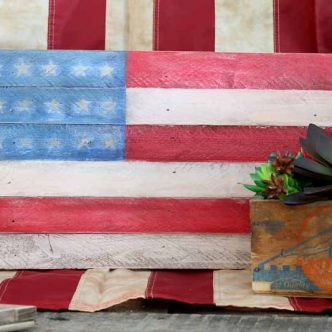

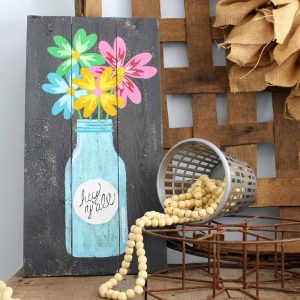
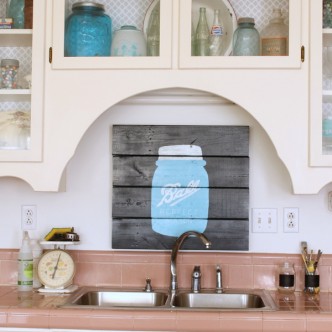
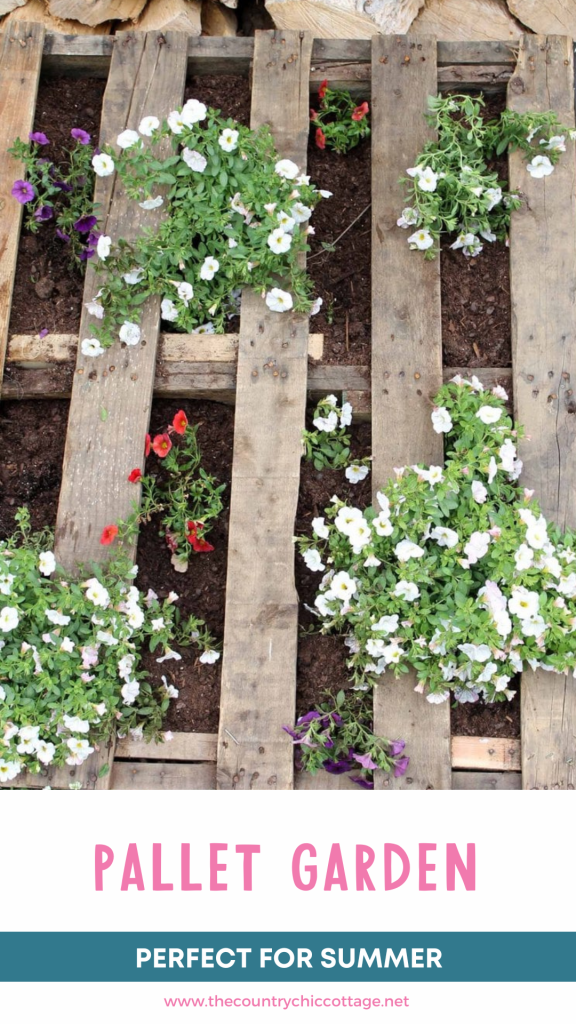











I’m an avid gardener, and this pallet garden is perfect!
nothing will grow or sty alive in my pallet garden…I have done what you suggested, but left mine flat on the ground. I watered it daily and it would still not stay wet enough.
Hmmm…Try lining with plastic instead then. So use plastic in place of the landscape fabric. That will help retain moisture. It may just be your climate and it needs more water.
I think this is a neat idea even if you have limited space or trying to cover an ugly space that nothing grows there.Thanks for sharing.
Do you do or know anything about hydroponic gardens?
I do not. Sorry!